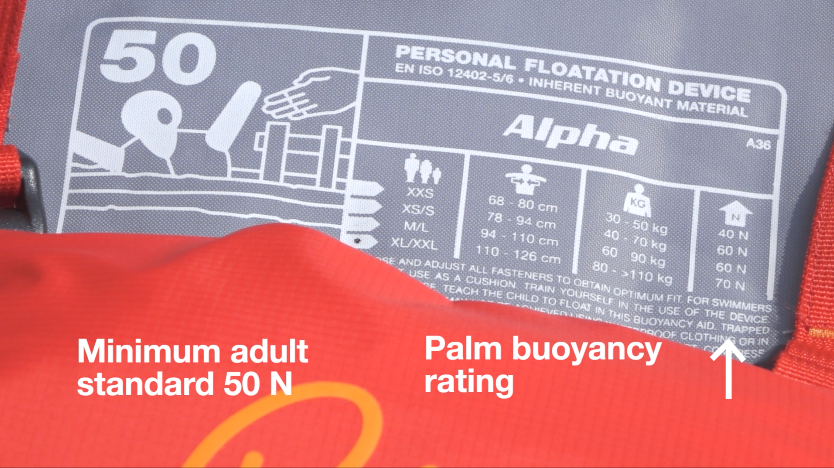Over time your PFD’s foam will shrink, and lose some of its buoyancy. Every year or two, it’s worth checking how much float yours has left. Here’s a quick and easy method, demonstrated in the video, and explained below:
Equipment
- A metal weight with a mass of about 10 kg (it will need to be heavier if your PFD is rated to above 100 N)
- Your PFD
- A short length of rope
- A luggage scale (cheap and easily available)
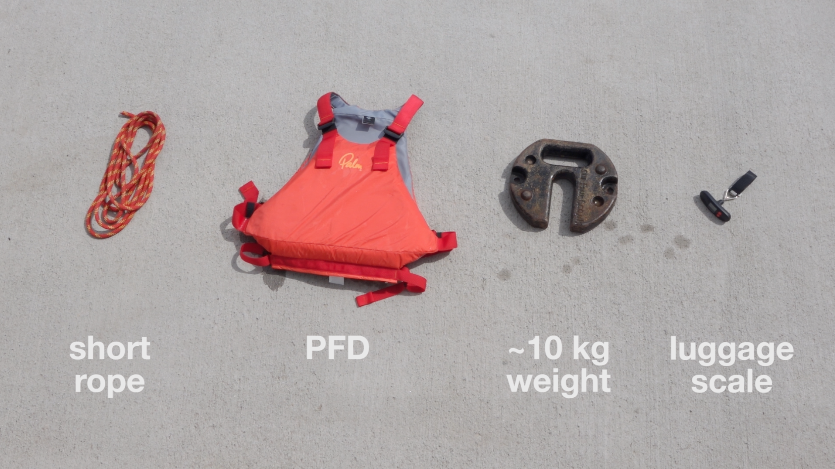
Method
1. Weigh your weight
Attach your weight to the rope, and weigh it once fully submerged in the water.
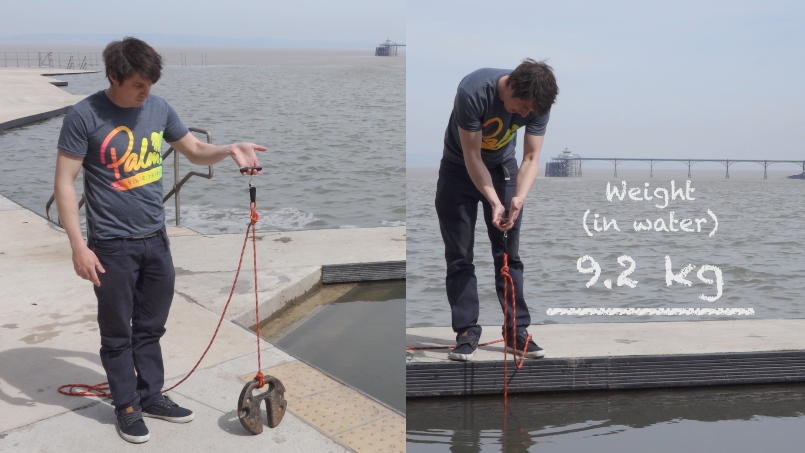
2. Weigh your weight and PFD together
Attach the PFD to the weight, and weigh the whole lot once again, fully submerged. Be sure to wait until any air trapped inside the PFD has escaped, as this will increase its buoyancy.
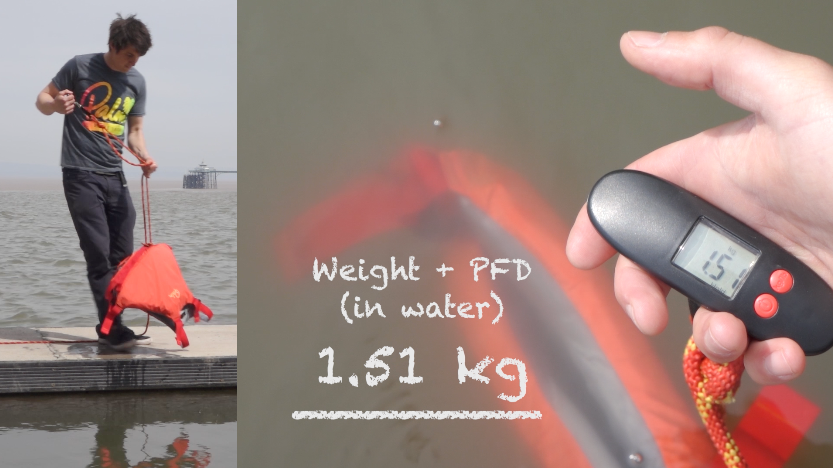
3. Calculate the difference
Calculate the difference in weight between the two measurements, by subtracting the second number from the first number.
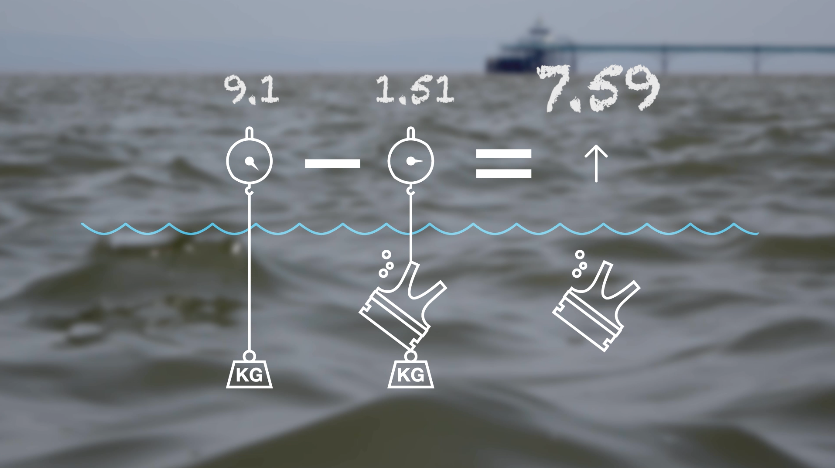
4. Convert to Newtons
If your result is in kilograms (force), then simply multiply the number by 9.8 (at the surface of the earth a mass of 1 kg has a gravitational downward pull of approximately 9.8 Newtons). This will give you the buoyancy of your PFD in Newtons.
Note: If your result is in some other nonsensical imperial measurements, then I recommend using metric units, it will make your sums much easier. Also, this is the 21st century :-)
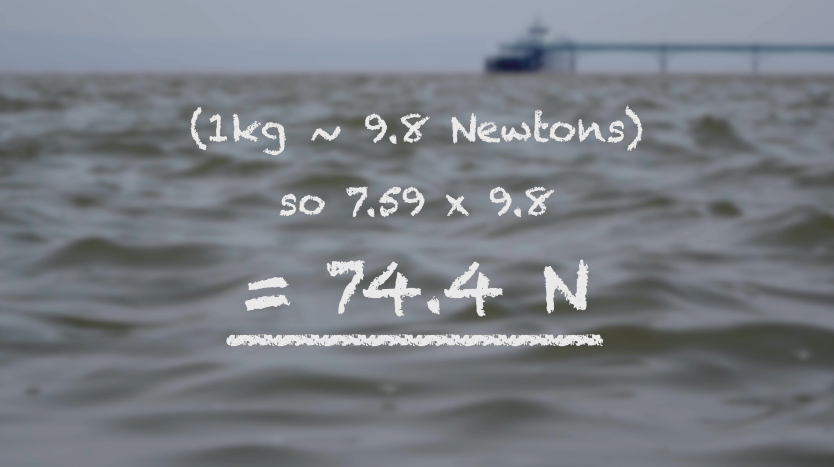
Results
You should now have a figure for the current buoyancy of your PFD in Newtons. The official standard for an adult buoyancy aid for kayaking is 50 N, however at Palm we often specify ours with more than this, particularly for use in whitewater. You’ll the buoyancy specification of your PFD written on its label.
